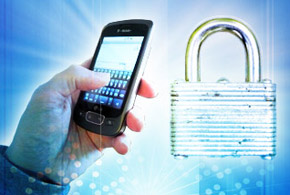By Maggie O’Neill
Many people are comfortable shopping online from their desktop or laptop computer, but security concerns can deter them from shopping with a mobile device, according to a recent survey. The problem is twofold: Businesses need to better educate consumers about the security measures in place to protect them, and smartphone owners need to use more security technology on their mobile devices.
Results from the “2013 National Online Safety Study,” conducted by the National Cyber Security Alliance and PayPal, reveal that 36 percent of respondents had security concerns about shopping with their smartphones, yet fewer than 22 percent had installed a security app beyond what came with their mobile device. In fact, users had installed more games than additional security apps.
“Many people just start using a mobile device without always taking the time to implement safety or security measures,” Michael Kaiser, executive director of the National Cyber Security Alliance, wrote in an email to Baseline. “Making sure their mobile device has security software and a program that can swipe data if it’s lost, as well as using a PIN or passcode on the device, will add layers of protection that can provide more peace of mind.”
Beyond concerns about information security, 22 percent of respondents were worried that someone would be able to make a purchase from their stolen or lost smartphone. Again, the survey showed that smartphone owners aren’t taking basic security steps: Only 34 percent lock their mobile device with a PIN.
A security system that requires more than a standard login and password combination would offer smartphone users additional protection, according to Kaiser, and approaches such as biometric identification for mobile devices may not be too far in the future. Fingerprint recognition, retinal scans and facial recognition are options that were appealing to survey respondents, but 25 percent said that “nothing” could be done to make them feel more secure when shopping online from a smartphone.
“Biometrics is one form of authentication, and there are others, such as two-step verification,” Kaiser stated. “These technologies are emerging quickly and effectively, and the willingness of the public to consider them is a sign that they understand the value of creating a trusted connection between their device and the site they are trying to connect with.”
While respondents were open to the idea of biometric identification, they did not appear reassured by the security measures in place when shopping online from smartphones. More than 70 percent of respondents do not use their smartphones at all to make purchases on a daily basis, while only about 10 percent make one transaction a day. Most feel safest accessing the Internet through their desktop or, in second place, their laptop. Only 8 percent of respondents said they shop most often from their smartphone.
Perhaps that’s because many people believe their smartphone is more likely than their wallet to be lost or stolen. A wallet holds the basics, but a smart phone provides access to much more, including contacts, email and links to financial services, Kaiser noted, adding that “People may feel that losing a smart phone would create an even bigger inconvenience than losing a wallet.”
With the increasing use of smartphones—more than 50 percent of all mobile phones in the United States are now smartphones—businesses can do more to assure customers of the security measures they’ve put in place, regardless of whether they are shopping online through their smartphone or through a desktop or laptop computer.
“[There is] a need for more education for customers about what commerce sites do to protect the information of their customers so they feel more secure about making a purchase,” Kaiser concluded.









